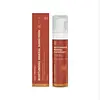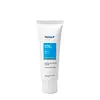What's inside
What's inside
 Key Ingredients
Key Ingredients

 Benefits
Benefits

 Concerns
Concerns

No concerns
 Ingredients Side-by-side
Ingredients Side-by-side

Aloe Barbadensis Leaf Juice
Skin ConditioningPrunus Amygdalus Dulcis Oil
Skin ConditioningArgania Spinosa Kernel Oil
EmollientCetearyl Olivate
Sorbitan Olivate
EmulsifyingTitanium Dioxide
Cosmetic ColorantCaprylic/Capric Triglyceride
MaskingPolyhydroxystearic Acid
EmulsifyingStearic Acid
CleansingAlumina
AbrasiveGlyceryl Stearate
EmollientCetearyl Alcohol
EmollientHeptyl Undecylenate
EmollientSqualane
EmollientBenzyl Alcohol
PerfumingSalicylic Acid
MaskingGlycerin
HumectantSorbic Acid
PreservativeButyrospermum Parkii Butter
Skin ConditioningDicaprylyl Carbonate
EmollientAloe Barbadensis Leaf Juice, Prunus Amygdalus Dulcis Oil, Argania Spinosa Kernel Oil, Cetearyl Olivate, Sorbitan Olivate, Titanium Dioxide, Caprylic/Capric Triglyceride, Polyhydroxystearic Acid, Stearic Acid, Alumina, Glyceryl Stearate, Cetearyl Alcohol, Heptyl Undecylenate, Squalane, Benzyl Alcohol, Salicylic Acid, Glycerin, Sorbic Acid, Butyrospermum Parkii Butter, Dicaprylyl Carbonate
Water
Skin ConditioningCoco-Caprylate/Caprate
EmollientDisodium Acetyl Glucosamine Phosphate
Skin ConditioningC13-15 Alkane
SolventNeopentyl Glycol Diheptanoate
EmollientGlycerin
HumectantDiisopropyl Sebacate
EmollientMethylene Bis-Benzotriazolyl Tetramethylbutylphenol
UV FilterXylitylglucoside
HumectantDiethylhexyl Butamido Triazone
UV AbsorberC20-22 Alkyl Phosphate
EmulsifyingCaprylhydroxamic Acid
Dimethicone
EmollientBis-Ethylhexyloxyphenol Methoxyphenyl Triazine
Skin ConditioningHydroxyethyl Acrylate/Sodium Acryloyldimethyl Taurate Copolymer
Emulsion StabilisingButylene Glycol
HumectantPrunus Yedoensis Leaf Extract
Skin ConditioningHydrogenated Rapeseed Oil
EmollientCaprylyl/Capryl Glucoside
CleansingAcacia Senegal Gum
MaskingPolyacrylate Crosspolymer-6
Emulsion StabilisingTrisodium Ethylenediamine Disuccinate
Arachidyl/Behenyl Alcohol
EmulsifyingXanthan Gum
EmulsifyingSodium Hydroxide
BufferingWater, Coco-Caprylate/Caprate, Disodium Acetyl Glucosamine Phosphate, C13-15 Alkane, Neopentyl Glycol Diheptanoate, Glycerin, Diisopropyl Sebacate, Methylene Bis-Benzotriazolyl Tetramethylbutylphenol, Xylitylglucoside, Diethylhexyl Butamido Triazone, C20-22 Alkyl Phosphate, Caprylhydroxamic Acid, Dimethicone, Bis-Ethylhexyloxyphenol Methoxyphenyl Triazine, Hydroxyethyl Acrylate/Sodium Acryloyldimethyl Taurate Copolymer, Butylene Glycol, Prunus Yedoensis Leaf Extract, Hydrogenated Rapeseed Oil, Caprylyl/Capryl Glucoside, Acacia Senegal Gum, Polyacrylate Crosspolymer-6, Trisodium Ethylenediamine Disuccinate, Arachidyl/Behenyl Alcohol, Xanthan Gum, Sodium Hydroxide
Ingredients Explained
These ingredients are found in both products.
Ingredients higher up in an ingredient list are typically present in a larger amount.
Glycerin is already naturally found in your skin. It helps moisturize and protect your skin.
A study from 2016 found glycerin to be more effective as a humectant than AHAs and hyaluronic acid.
As a humectant, it helps the skin stay hydrated by pulling moisture to your skin. The low molecular weight of glycerin allows it to pull moisture into the deeper layers of your skin.
Hydrated skin improves your skin barrier; Your skin barrier helps protect against irritants and bacteria.
Glycerin has also been found to have antimicrobial and antiviral properties. Due to these properties, glycerin is often used in wound and burn treatments.
In cosmetics, glycerin is usually derived from plants such as soybean or palm. However, it can also be sourced from animals, such as tallow or animal fat.
This ingredient is organic, colorless, odorless, and non-toxic.
Glycerin is the name for this ingredient in American English. British English uses Glycerol/Glycerine.
Learn more about Glycerin